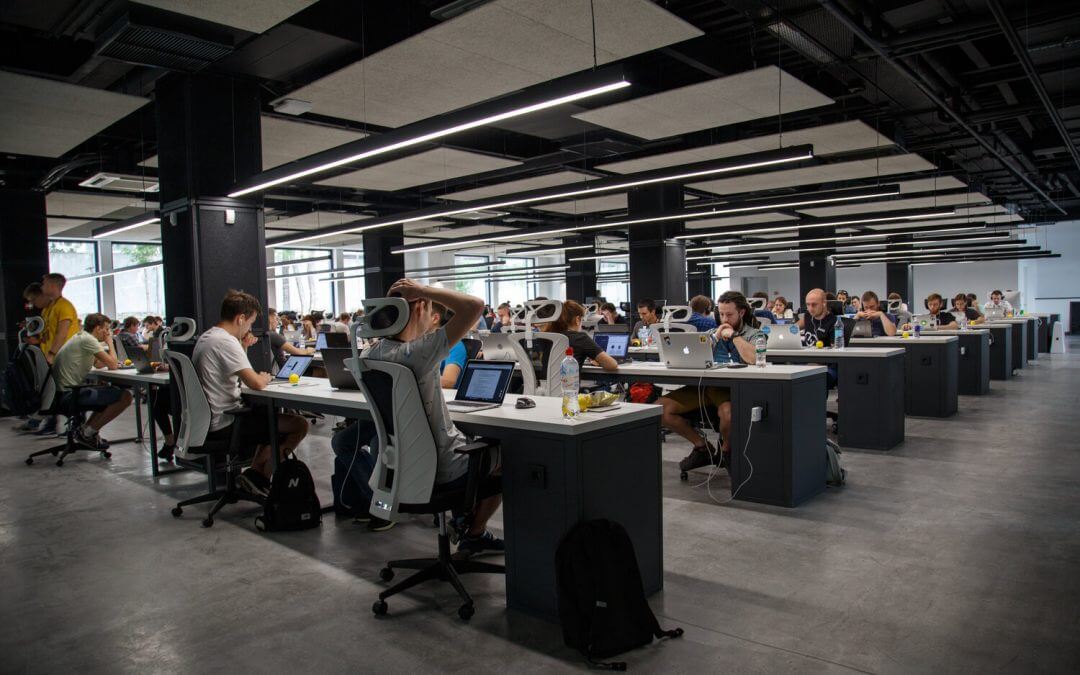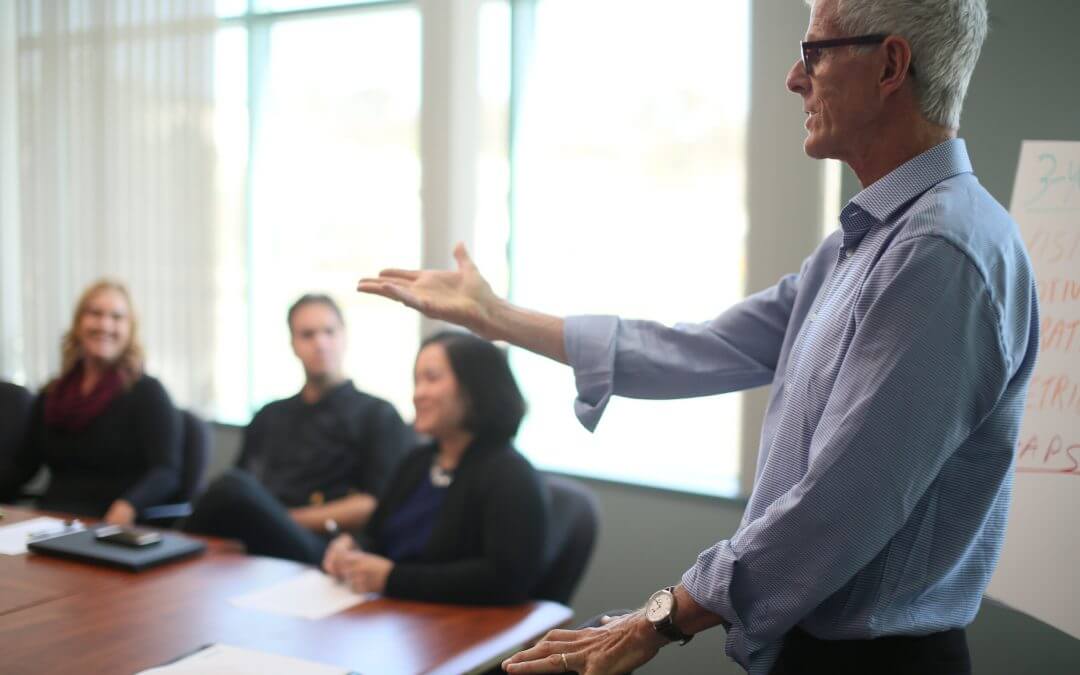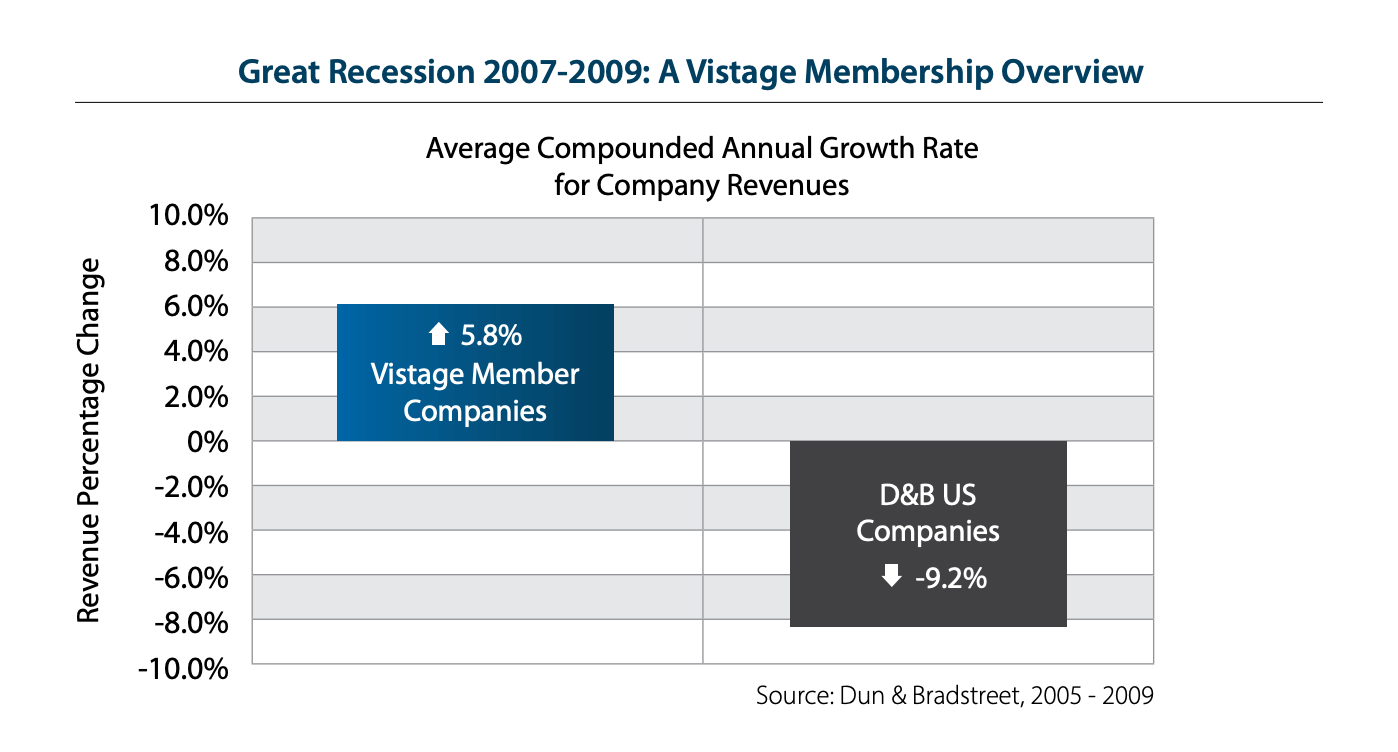Boeing’s 737 Max issues highlighted the company’s sacrifice of safety for financial performance, resulting in a tarnished reputation. The prioritization of profit over core values also damaged the FAA’s credibility and revealed a lack of accountability for top executives. This downfall serves as a reminder of the importance of maintaining core values and prioritizing them over short-term financial gains.

What Kind of Office Will We Return To?
As the Federal Government has gone effectively AWOL, it is up to the States to determine when to open the economy and start letting people go back to work due to the coronavirus. Unfortunately, most States are going their ways, as described by FastCompany and Wired. Former FDA Commissioner Scott Gottlieb told CNBC that employers need to have specific plans in place for how to return workers to the office or shop floor safely. Gottlieb suggested, “In an office, you could split your employees — have half of them work at home, half of them come into the office on alternating days. . . . You should continue to encourage telework where you can.”
Even as things open up, many are following Gottlieb’s advice and teleworking. Amol Sarva, CEO Knotel, says that Uber is planning to get its staff back to their offices in San Francisco, but only 20 percent of personnel allowed in the building on a given day. Google and other large tech companies have announced that their workers should prepare to work remotely through the Fall and possibly the end of the year. But the office won’t disappear, it is here to stay as many challenges come with working from home, and people are social creatures.
Working from Home
However, regardless of the States opening up, many employees will not return to the office, or at least not full time. According to an MIT report of Americans who previously commuted to work, 34 percent were working from home by the first week of April. Before lockdown, only 4 percent were working from home. Kate Lister, president of Global Workplace Analytics, predicts that 30 percent of people will work from home multiple days per week within a couple of years.
According to Travis Vance, at Fisher Phillips, “I think some people may never want to go back to an office setting.” Steve King, a partner at Emergent Research, told Recode, “[Remote work] had been proven before this, but a lot of company management and leaders showed great skepticism . . . That skepticism will go away because companies recognize that remote work does work.”
With employees working from home, it was quickly apparent was that the better-prepared companies were those whose employees had already worked from home. Data shows that the most frequent employee expenses in the first half of March were computer monitors, desks, office supplies, mice, and keyboards — a departure from the norm. According to a recent PWC study, about half of businesses expect productivity to fall during the pandemic due to a lack of remote work capabilities. Also, more formalization and company policies around remote work are necessary for the shift to be successful.
Many employees are finding that their home environments are not well suited to work, and so are spending money to create better home offices. Katie Storey, principal at Storey Design, says “there’s now a real focus on where can we convert a closet or add a room under the steps or where can we reconfigure parts of the house to be more functional work-from-home space.”
Initially On Return
Companies are going to have to implement systems that make workers feel safe before they will return. Many companies will adopt quick changes that have limited costs, like:
-
Providing face masks and deeper office cleaning;
-
Adding foot-pulls to the bottom of doors for hands-free access;
-
Developing hand signs or space markers for co-workers to remind others to keep their distance;
-
Seating may be roped off or removed from conference rooms to cut occupancy in half.
-
Doors may be taken off hinges or propped open so employees can avoid touching handles;
-
Signs are likely to point people in one-way traffic flows through hallways to help employees avoid passing each other close by — even if that means taking the long way to the bathroom;
-
Well-spaced desks with large dividers between them. “In the immediate future, “we’ll see physical, hard things that create separation,” according to Cavataio, President and COO of the Cuningham Group;
-
In common areas like meeting rooms and kitchens, expect to see fewer chairs and posted documentation of cleaning reports;
-
staggered arrival times;
-
staging areas for elevators, and
IBM is eliminating buffets and shared serving tools in its cafeterias and taking out furniture in other spaces to ease social distancing concerns in conference rooms. Lunchtimes could be staggered as employers try to thin crowds in campus cafeterias. “It’s like in school, where you have lunch starting at 10:45 and going until 2 p.m. You’ll see a lot more of that,” says Vance.
The Future of the Office
The modern office was initially designed by Frank Lloyd Wright, which emphasized natural light and space between desks. However, we have lost that vision as today’s open offices are used to cram more employees into smaller spaces. For years, the amount of privacy allotted to each person working in an office has steadily decreased as companies of all type adopted the often loathed open office plan. After the 2008 recession as office jobs increased, companies have been packing more and more people into open space offices, a practice known as “densification.” The effect has been a more distracted workforce, and surveys have shown that face-to-face communication declined by 70 percent, while electronic communication increased.
Well, that model is gone!
So what is the future? We’ve already seen a little of the future, as many organizations implemented greetings policy changes before sending employees home. Handshakes are out, and new greetings have emerged. Earlier this year, billboards in Beijing promoted clasping one’s own hands. The UAE and Qatar asked citizens to avoid nose-to-nose greetings, and the French government frowned on greetings with a kiss. It is likely handshakes, and French embrace will not return.
Here are the things we can expect.
Design
Offices still need personal space, natural lighting, and quiet enough to concentrate on being fully productive. As Cavataio notes, “Over time, we will start to design differently to create space versus how tight we can get it. Can we get our generous six feet of physical distance and still create a company environment people want to be in, knowing you have safety inherently based in the design?” Rather than desks facing each other or next to each other, workstations may be back to back with more distance between them. Conference rooms may have their seating cut in half. Also, an increase in private spaces and personal offices for individuals may return. Communal areas like kitchens and lobbies will have their seating areas reduced with more space.
Beyond desk arrangements, designers and public health researchers will have to address all spaces people move through offices, i.e., elevators, corridors, hallways, etc. Plans to address COVID, may become a regular feature in office design in the future, i.e.
-
restroom entrances without doors, like in airports;
-
corridors wider than the current five feet;
-
voice-activated elevators or touchless elevator controls;
-
Antimicrobial materials in new construction; and
-
Videoconferencing even within the office to avoid the conference rooms.
While meeting rooms will still be necessary, companies will reconsider what types of meeting rooms they want, and what kinds of meetings will require in-person attendance. Expect new meeting rooms geared towards group projects and collaboration.
In response to a flexible workforce, companies will require adaptive energy systems. Currently, office design accommodates a certain number of employees on any given day. If only half of the employees are now in the space, the energy usage is unlikely to change much, but the rooms may end up being colder than usual.
Expect increased automation and voice technology throughout the office. Voice technology, like Amazon Alexa for Business, could become a new interface and remove the need for physically pushing a button or touching a surface in an office. According to Bret Kinsella, founder & CEO Voicebot.ai, “There is voice tech in warehouses today but very little in office settings. That will absolutely change.”
An example of the future is already here in Bee’ ah new headquarters in Sharjah, UAE. Designed by Zaha Hadid Architects, the building has “contactless pathways,” enabling employees to touch the building with their hands rarely. Office doors open automatically using motion sensors and facial recognition, while lifts – and even a coffee – can be ordered from a smartphone.
Cushman Wakefield, over the past month, has helped 10,000 organizations in China move nearly 1 million people back to work after the country reopened its. Managing 800 million sq. ft. of office building space in China has enabled Cushman & Wakefield to get ahead of the learning curve. According to Despina Katsikakis, of Cushman’s occupier business performance, Cushman used its learnings, World Health Organization data, and medical specialists’ advice to develop a concept called the Six Feet Office. It has already applied inside its Amsterdam headquarters.
CUSHMAN & WAKEFIELD – THE 6 FEET OFFICE CONCEPT CONSISTS OF SIX ELEMENTS:
-
6 Feet Quick Scan: A concise but thorough analysis of the current working environment in the field of virus safety and any other opportunities for improvement.
-
6 Feet Rules: A set of simple and clear workable agreements and rules of conduct that put the safety of everyone first.
-
6 Feet Routing: A visually displayed and unique routing for each office, making traffic flows completely safe.
-
6 Feet Workstation: An adapted and fully equipped workplace at which the user can work safely.
-
6 Feet Facility: A trained employee who advises on and operationally ensures an optimally functioning and safe facility environment.
-
6 Feet Certificate: A certificate stating that measures have been taken to implement a virus-safe working environment.
Some companies are looking into mandating thermal scanners, according to Tom Puthiyamadam, leader of PwC’s U.S. Digital practice. “Not every enterprise is going to command and control mode, but I think right now some of these practices are warranted. I don’t think many employees are going to say no because a lot of [them] are actually scared to come back in,” said Puthiyamadam. Goldman Sachs is leading this as it considers installing infrared body temperature scanners to some offices, and ensuring that, once they are available, virus and antibody testing kits for employees are in offices.
Hoteling
Kay Sargent, of HOK, thinks more companies will turn to shared desks, known as “hotelling” or “hot desking.” “Perhaps you divide the workplace in half, and half the office can come in on Monday and Wednesday, half of the office can come in on Tuesday and Thursday,” said Gable Clarke, of the architecture firm SGA. Alternating days would come with alternating desks or non-designated desks. As shared workstations have long been a hotbed of disease transmission, designers expect the disappearance of shared keyboards and for companies to introduce clean desk policies. “Janitorial staff often cannot clean desks with personal items on them, as it’s a liability,” said Armen Vartanian of Okta. “It will likely be more sanitary to have open desks and workstations — equipped with the latest technology — that employees can pick each day and cleaned afterward.” All nonessential items stored in cabinets and drawers rather than on the desk to ensure proper cleaning and sanitation.
Sanitation
First, get ready for the “health cop,” as companies will have to deputize someone to enforce the new social distancing rules. “Enforcement becomes important because it’s human nature to sort of want to congregate together,” said Clarke.
However, sanitation efforts could be tremendous. According to Cavataio, regular offices will look to health care design as every surface; door handles, light switches, countertops, copy machine buttons, AV equipment, coffee makers, and many more, have to be cleaned. Like healthcare, businesses may require:
-
copper fixtures;
-
fabrics that retain fewer germs and cleaned easily;
-
more space in kitchens and bathrooms;
-
as well as more attention paid to how far liquids can splash;
-
UV lighting to disinfect offices at night or meeting rooms in between uses;
-
increased cleaning rotations;
-
virus-killing ultraviolet light to sterilize surfaces;
-
install air filters; and
-
touch-free technology, such as automatic doors and sinks.
Designers say they are receiving inquiries about disinfecting UV lights and easier to clean materials. Nicole Keeler, of Nelson Worldwide, said companies and building owners are enquiring about easy-to-clean materials. “There’s surfaces that are antimicrobial, just like you would see in a healthcare system or in a laboratory,” which may become a new norm for workstation surfaces, she said.
Many expect upgrades to office HVAC systems to stop the spread of infection, i.e., Purgenix. The International Facility Management Association (IFMA) is working with other specialized groups for cleaning and ventilation systems to create guidelines and protocols for building operators around the world. While proper ventilation is key to preventing the spread of COVID-19, a big trend could be merely opening a window. However, many offices are currently sealed, controlled units requiring a significant renovation. Where filtered air is the only option, high-end office climate control systems may be the best solution. Due to China’s poor air quality, such systems were already popular; however, these systems may have assisted the return of office workers so quickly.
Tracing Tools
While there appears to be general resistance to tracing tools issued by the government, companies are free to require them. Such tools would be either a new app or an updated business app that workers already have on their phones, which runs in the background. Using Bluetooth or WiFi signals, they would catalog other co-workers’ phones that come near. When an employee tests positive to COVID, managers would quickly identify and notify any colleagues the employee had been in contact with to help limit a broader outbreak. The advantages are that such tools avoid the lengthy interviewing process of employees, asking them to recall their interactions.
PricewaterhouseCoopers is launching a new contact tracing tool for businesses in early May, and more than 50 clients have shown interest. PWC’s tracing works only on corporate properties, doesn’t collect location data, and can only be accessed by authorized managers. Over the last four to five years, companies have increasingly used motion- or WiFi-detecting sensors installed on ceilings or desks to whether spaces are underutilized. Now they are going to be used for the opposite purpose, are spaces appropriately utilized. Is the right spacing? Are there pinch points where there’s overcrowding? Sensors will be able to tell when people vacate a seat and alert cleaners to clean it again before the next employee uses it.
Coworking Spaces
Many large companies were increasingly taking advantage of the flexible terms of coworking space rather than taking on long-term leases. Aside from the pre-COVID collapse of WeWork, the issue now is, “are companies going to want to put their entire team in one place, where they’re closely mingling with other businesses?” While some form of coworking spaces may remain, they will be very different – the bars, hang out areas will all be gone, and the models will revert to move of a “Regus” system.
The Commercial Real Estate Market
What will be the impact on the commercial office market? COVID is having a considerable effect, but the net outcome is hard to measure right now. Employees working from home have effectively expanded the supply of office space significantly. As a result, the amount of space needed by companies should fall. However, with the increase in space required for social distancing, more space will be required for each employee. “In short, it is too early to tell if companies will lease less space,” Julie Whelan, head of occupier research for America at CBRE, told Recode. “While they may need less space because some people may conduct some of their work remotely, they may also need more space to provide the social distancing that employees may feel they need to be comfortable.” These two trends may cancel each other out.”
Copyright (c) 2020, Marc A. Borrelli
Recent Posts
The Downfall of Boeing: A Lesson in Core Values
Resolutions, Here We Go Again.
In reflecting on 2021 resolutions, the author scored themselves in three categories and sought to improve success in 2022 by addressing friction points. Drawing on advice from social psychologist Wendy Wood, the author identified areas to reduce or increase friction in their failed resolutions. By making these adjustments, the author aims to enhance their goal achievement and encourages others to consider friction when setting resolutions.
You need to take an extended vacation. No, seriously, you do.
COVID has taken a toll on all of us. If you have not taken an extended vacation in a while where you disconnect, you need to now. You and your business will benefit.
Becoming Famous in Your Niche: The Success Story of Linn Products Limited
In a previous discussion, I highlighted the importance of being famous for something. Being well-known in your niche can help you: Concentrate on your strengths Connect with your target audience Communicate your offerings more effectively Receive referrals Identify...
Understanding and Optimizing Your Cash Conversion Cycle
Understanding and optimizing the Cash Conversion Cycle is crucial for business growth, as it impacts cash flow and the ability to access external capital. This cycle consists of four components: Sales, Make/Production & Inventory, Delivery, and Billing and Payments. To improve the Cash Conversion Cycle, companies can eliminate mistakes, shorten cycle times, and revamp their business models.
Discovering Your Niche: Why You Need to Be Famous for Something
As an entrepreneur, it’s crucial to specialize in a specific area and become famous for something, allowing you to generate referrals and build your brand. Understanding the “job” you’re hired for helps you stand out in the marketplace and communicate your value proposition effectively. By providing value to your clients, you can adopt a value-based pricing approach, ensuring your business remains competitive and maintains a strong market presence.
Rethinking Your Pricing Model: Maximizing Margins and Providing Value
Rethink your pricing model by focusing on the value you provide and your customers’ Best Alternative To a Negotiated Agreement (BATNA). This approach can help you maximize margins while delivering better value to your clients. Assess your offerings and brainstorm with your team to identify pricing adjustment opportunities or eliminate commodity products or services.
Do you know your Profit per X to drive dramatic growth?
I recently facilitated a workshop with several CEOs where we worked on the dramatic business growth model components. One of the questions that I had asked them beforehand was, "What is Your Profit/X?" The results showed that there this concept is not clear to many....
The War for Talent: 5 Ways to Attract the Best Employees
In today’s War for Talent, attracting the best employees requires a focus on value creation, core customer, brand promise, and value delivery. Clearly articulate your company’s mission, identify your “core employee” based on shared values, and offer more than just a salary to stand out as an employer. Utilize employee satisfaction metrics and showcase your company’s commitment to its workforce on your website to make a strong impression on potential candidates.
Are you killing your firm’s WFH productivity?
Productivity remained during WFH with COVID. However, further analysis found that hourly productivity fell and was compensated for by employees working more hours. What was the culprit – Meetings. Want to increase productivity, have fewer meetings.














